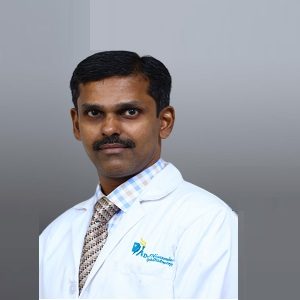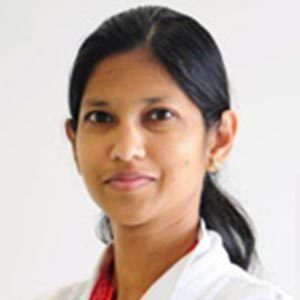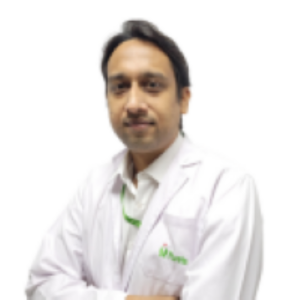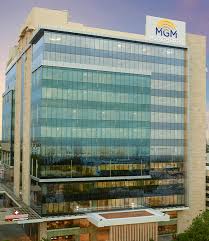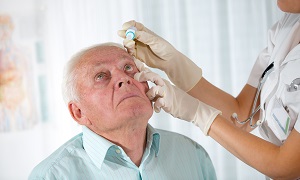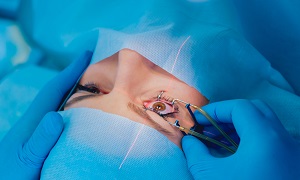Best Doctors in India for Hypermetropia Treatment
- Opthalmologist, Chennai, India
- Over 26 years’ experience
Profile Highlights:
- Dr. Pratik Ranjan Sen is a specialist in Ophthalmology and serves as an Ophthalmologist – Consultant at Apollo Hospitals, Chennai.
- He has performed over 8000 Retinal detachment and other Vitreo retinal disorder surgeries.
- Dr. Pratik Ranjan Sen considers his profession a mission and is dedicated to his work. Due to this, he has gained enough trust and recommendations from his patients.
- Ophthalmologist, Chennai, India
- Over 21 years’ experience
Profile Highlights:
- Dr. Viswanathan P is one of the best eye surgeons in India having an overall experience of 21 years.
- He is a qualified doctor from the Tamil Nadu University of India and possesses a degree in MBBS and MS.
- One can visit him for routine eye check-ups or retina examinations and services like eye surgery, retina surgery, cataract surgery, etc.
- Ophthalmologist, Gurugram, India
- Over 13 years’ experience
Profile Highlights:
- Dr. Svati Bansal is an esteemed consultant and practitioner of ophthalmology in Gurugram.
- Her specialty lies in orbit and oculoplasty, ocular oncology, ocular trauma, and neuro-ophthalmology.
- She has fellowships in neuro-ophthalmology and ocular motility, oculoplasty, and facial aesthetics, and ocular oculoplastic and ocular oncology.
- Ophthalmologist
- Over 10 years' experience
Profile Highlights:
- Dr. Amit Jain is an experienced Ophthalmologist based in Mumbai, who specializes in treating patients with eye issues, particularly those related to Vitreo-Retina, Uvea, and ROP.
- He is an expert in employing the most recent techniques in eye surgery to address conditions like diabetes that damage the eyes and correct issues with the back of the eye.
- With more than 10 years of expertise, Dr. Amit Jain has made a name for himself as a leading expert in the field of eye care.
- He completed his medical training in Ophthalmology at the Dr. Rajendra Prasad Centre for Ophthalmic Sciences at AIIMS in New Delhi, a renowned institute for eye treatment. Later, he went on to pursue long term clinical fellowship in Vitreoretina at Sanskara Netralaya in Kolkata and Chennai.
- He started his professional career at Shri Ganapati Netralaya in Jalna, Maharashtra as an Associate Consultant in the department of Vitreoretina and Uvea services. And now, he serves as a Consultant in the Department of Ophthalmology at Fortis Hospital, Mulund.
- Apart from being a medical practitioner, Dr. Jain also enjoys imparting information and knowledge among young minds. He mentors aspiring medical professionals who wish to focus on eye care.
- Several of his works on the topic of eyes have been published in prestigious medical publications. Additionally, he often speaks at medical conferences where eye specialists from throughout the nation get together to exchange knowledge.
Best Hospitals in India for Hypermetropia Treatment
Pushpawati Singhania Hospital & Research Institute, New Delhi
- City: New Delhi, India
Hospital Highlights:
- Established in 1996, Pushpawati Singhania Research Institute is one of the top hospitals in the NCR region, as well as one of the top facilities in India for gastroenterology. The hospital is one of South Asia’s first institutes in medical and surgical treatment for diseases related to digestion.
- The hospital is equipped with state-of-the art facilities coupled with the latest equipment as well as renowned consultants from various parts of India as well as other parts of the world.
W Pratiksha Hospital, Gurgaon
- City: Gurugram, India
Hospital Highlights:
- W Pratiksha Hospital, Gurugram, is one of the best hospitals in the NCR region. It is also a top hospital in India for IVF. Since its inception, the hospital has performed over 5500 successful IVFs. The hospital also specializes in gynecology.
- With over 20 years of experience in providing quality healthcare, the hospital is known as one of the most trusted and valued health providers in India.
- Equipped with world-class medical facilities and advanced technology, the hospital’s doctors and clinicians also have a track record of delivering excellent results. The hospital is also known for focusing on preventive well-being as much as on curative treatment.
- The hospital has earned the trust of its patients, by providing the best available treatments at affordable costs.
Narayana Superspeciality Hospital, Gurugram
- City: Gurugram, India
Hospital Highlights:
- Situated near DLF Cyber City, Gurugram, Narayana Superspecialty Hospital is one of the top medical facilities in the Delhi NCR region, catering to the needs of the people. Known for its commitment to quality medical care and patient service, the hospital is a state-of-the-art facility with planned and well-equipped sections, which includes a spacious OPD area as well as comfortable patient rooms.
- It is the closest super-specialty hospital from Indira Gandhi International Airport towards Gurugram, and also the nearest super specialty hospital from DLF Cyber City. It is also close to major residential areas in Gurugram.
- It is part of the renowned Narayana Health Group. Established in 2000, by Dr. Devi Shetty, a renowned cardiac surgeon, it has grown to be one fo India’s leading healthcare groups.
Sir Ganga Ram Hospital, New Delhi
- City: New Delhi, India
Hospital Highlights:
- Sir Ganga Ram Hospital, New Delhi is known to provide the latest medical procedures with the latest technology in all of its units.
- The hospital has a team of reputed doctors, nurses, and healthcare professionals that ensure that patients receive quality care at affordable costs.
- Staffed with a team of highly qualified doctors, dedicated nurses, and paramedical and non-medical staff, the hospital aims to lead in healthcare delivery, medical education, training, and research.
- As per the vision of the founder, the hospital also provides free treatment to the economically weaker sections of society.
- Sir Ganga Ram Hospital also provides training to young doctors under the Diplomate in National Board(DNB) program. The DNB program at the hospital was started in 1984 and it is known for currently running the maximum number of DNB specialties in the country. It also has the distinction of having the first bone bank in India.
KIMS Hospital, Hyderabad
- City: Hyderabad, India
Hospital Highlights:
- KIMS Hospital (a brand name of Krishna Institute of Medical Sciences) is one of the largest and best multi-speciality hospitals in Hyderabad. The hospital provides various treatments to an enormous number of patients.
- The hospital has a capacity of more than 3000 beds. KIMS Hospitals offers different healthcare services in more than 25 specialities and super specialities.
- The hospital is equipped with modern medical equipment and technology. It has robotic equipment to provide minimal invasive techniques for patients.
- The hospital is aimed at providing world-class healthcare facilities and services at an affordable cost for patients.
- The various specialities and departments of the hospital include neurosciences, gastroenterology & hepatology, robotic science, reproductive sciences, dental science, oncological sciences, organ transplantation, heart and lung transplantation and mother and child care.
Fortis Hospital, Shalimar Bagh
- City: New Delhi, India
Hospital Highlights:
- Fortis Hospital in Shalimar Bagh is a multi-super specialty hospital that strives to provide world-class patient care by leaving no stone unturned.
- Fortis, Shalimar Bagh, with 262 beds and a 7.34-acre footprint, provides the best level of medical care through its team of doctors, nurses, technicians, and management professionals.
Reliance Hospital, Mumbai
- City: Mumbai, India
Hospital Highlights:
- Reliance Hospital is one of the best super-specialty care hospitals in Navi Mumbai.
- The main purpose of this hospital is to become a trustworthy place for the best health and hope for society. The hospital is well connected to the suburbs of Mumbai and Navi Mumbai.
- The hospital has various specialty departments, viz., Accident & Emergency, Anesthesiology, Dental Services, Dermatology, Diabetology, Dietetics Nutrition, Endocrinology, ENT, Gastroenterology, General Surgery, Gynaecology And Obstetrics, Hepato Pancreato Biliary Surgery, Infectious Disease, Internal Medicine, Interventional Radiology, Laboratory Medicine, Minimal Access Laparoscopic Surgery, Nephrology, Neurosciences, Opthalmology, Orthopaedics, Paediatrics, Pain Management Palliative Care, Physical Medicine Rehabilitation, Plastic And Reconstructive Surgery, Psychiatry, Pulmonary Medicine, Radiology, Rheumatology, Transplant, Urology Andrology, Vascular Surgery
Lilavati Hospital & Research Centre, Mumbai
- City: Mumbai, India
Hospital Highlights:
- Lilavati Hospital & Research Centre is India’s premier multi-speciality tertiary care hospital and has been recognised as a global medical excellence centre.
- Lilavati Hospital & Research Centre has built an unrivalled level of trust with its patients over the years, thanks to a solid foundation that comprises cutting-edge facilities, the best medical competence, research, education, and charity endeavours.
- The hospital is quite proud of the fact that it now serves patients from all kinds of backgrounds, not just from the United States but from all around the world.
- The hospital has a total of 323 beds, one of the largest Intensive Care Units (ICUs), 12 Operation Theatres with modern amenities, over 300 consultants, and almost 1,800 personnel.
Venkateshwar Hospital, Dwarka, New Delhi
- City: New Delhi, India
Hospital Highlights:
- State-of-the-art technology and devoted healthcare professionals have been brought together under one roof at Venkateshwar Hospital to provide genuine medical care. The hospital’s professionals work together as a team to deliver the best possible treatment to their patients, using the most sophisticated equipment and information technology.
- Venkateshwar Hospital’s mission is to attain global excellence in healthcare by employing evidence-based, ethical clinical practices and cutting-edge technology by a team of highly skilled experts.
MGM Healthcare, Chennai
- City: Chennai, India
Hospital Highlights:
- Located in Chennai, India, MGM Healthcare is a top multispecialty hospital that provides all medical services under one roof.
- Since its founding in 2019, MGM Healthcare has quickly become a leading national referral centre, creating several innovative flagship initiatives.
- MGM Healthcare combines next-generation medical and digital technologies to provide better patient results.
- With 12 centres of excellence, more than 400 inpatient beds, 100 intensive care unit beds, and 24/7 emergency care, MGM Healthcare leaves no chance in redefining the patient experience in Chennai.
- MGM Healthcare boasts 250+ expert doctors across 30+ departments, including Cardiology, Pulmonology, Neurology, Obstetrics & Gynaecology, and more.
- They house 12 specialized Centres of Excellence, including Neurosciences, Orthopaedics, and Multi-Organ Transplantation.
- Their team of doctors, nurses, and paramedics works together to give every patient individualized treatment.
Hypermetropia
Hypermetropia, which is also known as hyperopia or farsightedness is a common vision condition in which you are able to see distant objects clearly but nearby objects appear blurry. People having severe farsightedness may be able to see objects only a great distance away, while those with mild farsightedness, can see objects that are closer.
In most cases, this condition is present at birth and tends to run in families.
Symptoms
If your eyes are working hard to see anything up close, and you experience eyestrain, then it may be a symptom of farsightedness.
Some other symptoms include the following:
- Blurry vision for words or objects up close
- Squinting for seeing better
- A headache after reading or similar tasks that require you to focus on something close
- An aching or burning sensation around the eyes
Children can develop strabismus or crossed-eyes if their farsightedness is significant and hasn’t been diagnosed and corrected.
Causes
Your eye has two parts that focus images, i.e. the cornea, which is the clear, dome-shaped front surface of your eye, and the lens, which resembles a candy in size and shape.
In a normal eye, each of these focusing elements has a perfectly smooth curvature, such as the surface of a marble. A cornea and lens with such curvature refract all the incoming light to create a sharply focused image directly on the retina, at the back of your eye.
If the cornea or lens is not curved evenly and smoothly, light rays are not refracted properly, and therefore, you suffer from a refractive error.
When your eyeball is shorter than normal or your cornea is curved too little, it leads to farsightedness or hypermetropia.
Diagnosis
Refraction assessment
To diagnose Hypermetropia or farsightedness, just a basic eye exam is required which includes a refraction assessment and an eye health exam.
A refraction assessment is to determine if you are having vision problems such as nearsightedness, farsightedness, presbyopia, or astigmatism. Your doctor might also use various instruments and ask you to look through several lenses to test your distance as well as your close-up vision.
Eye drops
Treatment
In young people, especially children, treatment is not always required because since the crystalline lenses inside the eyes are flexible enough to compensate for the condition. Depending on how severe the farsightedness is, you may require prescription lenses in order to improve your near vision. This is especially likely as your age increases, and the lenses inside your eyes become less flexible.
Prescription lenses
Prescription lenses are of two types which include:
Eyeglasses
Contact lenses
These lenses are worn right on your eyes. They are available in a variety of materials and designs. You can talk to your eye doctor about the pros and cons of contact lenses and what is the best option for you.
Wearing glasses or contact lenses generally won’t have a significant impact on your lifestyle. Most people are able to adapt quite easily.
Refractive surgery
Refractive surgery is another option to treat Hypermetropia or farsightedness. Surgery involves procedures like LASIK. While this procedure is generally more commonly used to treat nearsightedness, it can also be used to treat farsightedness. This treatment method uses a laser to change your cornea’s curvature so that the light refracts correctly and is able to project a focused image on your retina.
It is notable that refractive surgery is not as safe as wearing glasses. Although it happens rarely, there is a chance that the surgery may damage your vision.
Possible complications of the surgery include:
- Over- or under-correcting the vision
- Infection
- Dry eyes
- Seeing a starburst or halo around lights
Complications
Far-sightedness or hypermetropia can be associated with several other conditions. Some of them include the following:
Crossed eyes – Some children suffering from farsightedness might develop crossed eyes. Specially designed eyeglasses that correct part of or the entire farsightedness might treat this problem.
Eyestrain – If your farsightedness is not corrected it may cause you to squint or strain your eyes for maintaining focus. This can lead to eyestrain and headaches.
Impaired safety – Having an uncorrected vision problem not only jeopardizes your safety but also that of others. This could be serious if you operate heavy equipment or drive a car.
Reduced quality of life – With uncorrected farsightedness, you will mostly not be able to perform a task as well as you want.
Financial burden – The cost of corrective lenses, eye exams, and medical treatments can also add up with a chronic condition like farsightedness.
Prevention
Farsightedness is not generally preventable, but caring for your eyes may reduce the risk.
- Get regular eye exams to detect any problem early
- Get annual checkups if you have any chronic conditions like diabetes or blood pressure, that may affect your vision
- If you have ongoing eye problems such as glaucoma, it is best to follow your doctor’s treatment plan
- Visit your doctor if you develop changes in your vision or if you have eye pain, red eyes, or a discharge from your eyes
You can prevent eyestrain if you protect your close-up vision with proper lighting in your home and your office. It can also help to take breaks throughout the day for resting your eyes. This is important if you spend long periods of time reading or looking at your computer.


